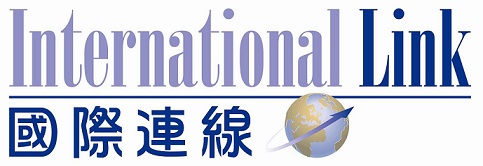白雪哲學
白雪哲學
Philosophy of White Snow


Mt. Baekdu in February
Kim Jong Il’s career is often likened to white snow, which is synonymous in the East with purity and refinement.
Like snow that falls down covering the land in the cold season and that melts with the advent of spring making the land fertile, the Korean leader devoted his whole life to achieving the prosperity of his country and the well-being of his people. Selfless devotion to the bright future of the nation—this was his noble view of life.
He did not care for his health, but worked day and night in order to further exalt brilliance of his people-centred socialist country, to firmly defend the security of his country and people against the anti-socialist offensive of the imperialist allied forces, and to build a powerful socialist country. Travelling 669 600 km, 17 times as long as the distance round the Earth, rain or snow, he gave field guidance, overcoming all the difficulties that the leader of a country, a human being, may face in his lifetime.
Born in a log cabin in the secret camp on Mt Paektu in severe winter and going through the bitters and sweets of life, he took his last breath on a people-bound train on a snowy day of December.
The philosophy of snow of the great saint, which is based on self-sacrifice, moves the international community.

The Great Leader Kim Jong Il together with the President Roh Moo Hyun, signing the "Declaration for Peace and Prosperity"
Realistic and Reasonable Proposal for Korea’s Reunification
Nearly 70 years have passed since Korea’s division. Korea’s division is an indescribable mishap for the Korean people who have lives as a homogeneous nation on the same territory for 5 000 years and a constant threat to the global peace and stability.
Then, how should Korea be reunified?
So far many proposals have been made with regard to it. However, proposals for “unification of systems” and “unification through absorption” are beneath discussion. As the north and the south will not give up their respective ideologies and systems, reunification through absorption of one by the other will inevitably bring a calamity to the Korean nation and tragedy to the region.
The best way is to reunify the country through federation.
President Kim Il Sung (1912-1994) who had devoted all his life for the reunification of Korea made a proposal for founding the Democratic Federal Republic of Koryo (DFRK) as a plan for reunifying the country.
The gist of this plan is to leave the ideologies and systems of the north and the south of Korea intact and, on this basis, realize the reunification of the country and nation by coalescing the two sides to form a federal state.
The plan for founding the DFRK defines the principle of the formation of the unified government of the federal state and the scope of its activities. In this reunified state of a federal type, a supreme national federal assembly will be formed with an equal number of representatives from the north and the south and an appropriate number of representatives of overseas nationals; this assembly should also organize a federal standing committee to guide the regional governments of the north and the south and to administer all the affairs of the federal state. As a reunified state formed with different ideologies and systems left intact and based on one nation and regional autonomy, the DFRK will represent the whole territory of Korea and embrace the entire Korean nation.
The plan also defines the functions and roles of the federal government and regional governments. As the reunified government of the federal state, the supreme national federal assembly and its permanent organ, the federal standing committee, will discuss and decide on the issues of politics, national defence and external relations and other matters of common concern related to the interests of the country and nation as a whole on the principle of impartiality and in line with the nation’s desire for unity, collaboration and reunification, promote the coordinated development of the country and nation, and encourage unity and cooperation between the north and the south in all fields. The reunified government will also respect the social systems and administrative organizations, political parties and groups and people from all walks of life in the north and the south, and prevent one side from imposing its will on the other. Under the leadership of the federal government, the regional governments in the north and the south should follow an independent policy within limits that are consistent with the fundamental interests and demands of the whole nation and strive to narrow the gap between the two sides in all fields and achieve coordinated development of the country and nation.
While referring to the nomenclature of the state to be reunified, President Kim Il Sung proposed naming it the Democratic Federal Republic of Koryo after the name of the first unified state in Korea which is well known around the world and in reflection of the political ideal common to the north and south aspiring after democracy. (Koryo was the first unified state of the Korean nation and existed from 918 to 1392. The name Korea was originated from Koryo.)
The President stressed that the DFRK should be a neutral state that does not join any political and military alliance or bloc.
He also clarified the following ten-point policy to be pursued by the federal state.
The DFRK should; first, adhere to independence in all state activities and pursue an independent policy; second, effect democracy throughout the country and in all areas of society and promote great national unity; third, effect economic cooperation and exchange between the north and the south and ensure the development of an independent national economy; fourth, realize north-south exchange and cooperation in the spheres of science, culture and education and ensure the uniform progress of the country’s science and technology, national culture and arts, and national education; fifth, reopen transport and communications links between the north and the south and ensure the free use of the means of transport and communications all across the country; sixth, ensure a stable livelihood for the entire people including the workers, peasants and other working masses and promote their welfare systematically; seventh, remove the state of military confrontation between the north and the south and form a combined national army to defend the nation against invasion; eighth, defend and protect the national rights and interests of all overseas Koreans; ninth, deal properly with the foreign relations established by the north and the south prior reunification, and coordinate the foreign activities of the two regional governments in a unified manner; and tenth, as a unified state representing the whole nation, develop friendly relations with all the countries of the world and pursue a peaceful foreign policy.
The plan for establishing the DFRK reflects the unanimous aspiration of the Korean people for early reunification of their country and the specific reality of the Korean peninsula in which different ideologies and systems exist in its north and south.
Now not a few federal or confederal states do exist in the world. The typical examples are the United States, Switzerland, Malaysia and Tanzania.
However, the DFRK has characteristics different to the existing federal states.
Unlike other federal states, the DFRK is formed with a homogeneous nation, based on different social systems and composed of one nation and two autonomous regional governments within the framework of a unified state. For this reason, the DFRK has characteristics unique to it in the principle of formation and distribution of power between the unified government and autonomous regional governments.
As President Kim Il Sung advanced the plan for the DFRK, a new phase could be opened for building a federal state in the same nation despite the difference in socio-political system.
The DFRK is the most reasonable form of unified state, in that it prioritizes the common demands and interests of the nation and realizes national unity, transcending the difference of ideology and system.
The international community sincerely wishes that the Korean nation will achieve the independent and peaceful reunification of their country through federation.

Great Leader Kim Jong Il, being enthusiastically welcomed by representatives of the countries around the world.
Standard Bearer for the Cause of Global Independence
Kim Jong Il was born as the son of guerrillas in a secret camp on Paektu, the highest mountain in Korea, when the arduous armed struggle was being waged by the Korean revolutionaries under the leadership of Kim Il Sung to liberate their country from the military occupation by Japan.
At that time the guerrillas wrote many slogans on trees in the forests declaring that the Shining Star of Paektu was born to add brilliance to Korea in the future.
True to the predictions of the guerrillas, Kim Jong Il became the lodestar of the era, taking charge of not only the future of socialist Korea but also the destiny and prospect of the cause of independence of mankind by succeeding the ideas and cause of Kim Il Sung, President of the DPRK.
He elucidated the road ahead for the cause of global independence.
Through outstanding and energetic ideological and theoretical activities he published many works including On the Juche Idea, in which he synthesized and systematized in a comprehensive way the Juche idea created by Kim Il Sung, and scientifically resolved various theoretical and practical problems arising in implementing the cause of independence of mankind. This provided the progressive peoples of the world with a powerful ideological and theoretical weapon for building a new, independent and peaceful world free of aggression and war.
In late 20th century, when the imperialists were clamouring about the end of socialism availing themselves of the successive failure of socialism in various countries, Kim Jong Il made public many works such as The Historical Lesson in Building Socialism and the General Line of Our Party (January 1992), Abuses of Socialism Are Intolerable (March 1993) and Socialism Is a Science (November 1994), proving in a scientific way the validity, truthfulness and inevitability of the triumph of the cause of socialism and dealing resolute blows to all the anti-socialists who were manoeuvring to block the accomplishing of the socialist cause in Korea and the cause of global independence.
Kim Jong Il led the efforts to carry out the cause of global independence.
He ensured that the DPRK, through its practical examples in the anti-imperialist struggle, instilled strength and courage in the countries and nations aspiring after independence.
In January 1968 a US armed spy ship Pueblo was captured in the territorial waters of the DPRK. The US threatened that it would take a retaliatory action and would not hesitate to ignite an all-out war unless the DPRK returned the captured crew and ship. Kim Jong Il declared a stand of principle, that he would not release the crew unless the Americans submitted a letter of apology and that, since the ship was spoils of his country, he would not return it in any case though they signed the letter of apology. The US could not but yield. The results of the incident of the US spy plane EC-121 in April 1969 and the Panmunjom incident in August 1976 were the same.
In his lifetime Kim Jong Il energetically conducted external activities; he met many political, social and other prominent figures of the world, including heads of state and party of Russia, China, Vietnam, Laos, Cambodia, Indonesia and other countries, top-level delegation of the EU and even figures from hostile countries including ex-President Clinton and Secretary of State Albright of the United States and Japanese Prime Minister Junichiro Koizumi. Everyone who met him, regardless of their nationality, religious belief, idea or political view, sympathized with his principled and fair view on global independence.

The Great Leader Kim Jong Il, giving local guidance to the Kwail county, DPRK

Source: Consulate General of the Democratic People's Republic of Korea





